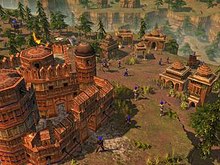
The history of China spans several millennia across a wide geographical area. Each region now considered part of the Chinese world has experienced periods of unity, fracture, prosperity, and strife. Chinese civilization first emerged in the Yellow River valley, which along with the Yangtze basin constitutes the geographic core of the Chinese cultural sphere. China maintains a rich diversity of ethnic and linguistic people groups. The traditional lens for viewing Chinese history is the dynastic cycle: imperial dynasties rise and fall, and are ascribed certain achievements. Throughout pervades the narrative that Chinese civilization can be traced as an unbroken thread many thousands of years into the past, making it one of the cradles of civilization. At various times, states representative of a dominant Chinese culture have directly controlled areas stretching as far west as the Tian Shan, the Tarim Basin, and the Himalayas, as far north as the Sayan Mountains, and as far south as the delta of the Red River.

The history of Asia can be seen as the collective history of several distinct peripheral coastal regions such as East Asia, South Asia, Southeast Asia and the Middle East linked by the interior mass of the Eurasian steppe. See History of the Middle East and History of the Indian Subcontinent for further details on those regions.

East Asia generally encompasses the histories of China, Japan, Korea, Mongolia, and Taiwan from prehistoric times to the present. Each of its countries has a different national history, but East Asian Studies scholars maintain that the region is also characterized by a distinct pattern of historical development. This is evident in the relationships among traditional East Asian civilizations, which not only involve the sum total of historical patterns but also a specific set of patterns that has affected all or most of traditional East Asia in successive layers.
Sinocentrism refers to a worldview that China is the cultural, political, or economic center of the world.

The Liang dynasty, alternatively known as the Southern Liang or Xiao Liang in historiography, was an imperial dynasty of China and the third of the four Southern dynasties during the Northern and Southern dynasties period. It was preceded by the Southern Qi dynasty and succeeded by the Chen dynasty. The rump state of Western Liang existed until it was conquered in 587 by the Sui dynasty.
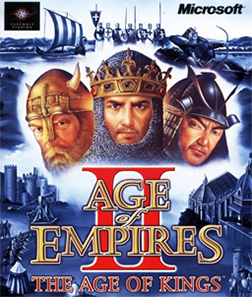
Age of Empires II: The Age of Kings is a real-time strategy video game developed by Ensemble Studios and published by Microsoft. Released in 1999 for Microsoft Windows and Macintosh in 2001, it is the second game in the Age of Empires series. The Age of Kings is set in the Middle Ages and contains thirteen playable civilizations. Players aim to gather resources, which they use to build towns, create armies, and defeat their enemies. There are five historically based campaigns, which conscript the player to specialized and story-backed conditions, as well as three additional single-player game modes; multiplayer is also supported.
Sakuma is a Japanese surname. Notable people with the surname include:

Age of Empires II: The Conquerors is the first expansion pack to the 1999 real-time strategy video game Age of Empires II: The Age of Kings. The fourth installment in the Age of Empires series by Microsoft Game Studios and Ensemble Studios, The Conquerors was released in August 2000. It features five new civilizations, four new campaigns, eleven new units, twenty-six new technologies, new gameplay modes, new maps and different minor tweaks to the gameplay.
The foreign relations of Imperial China from the Qin dynasty until the Qing dynasty encompassed many situations as the fortunes of dynasties rose and fell. Chinese culture had influenced neighboring and distant countries, while being transformed by outside influences as well as being conquered. During the Western Han dynasty, the Silk Road trade routes were established and brought Hellenistic Central Asia, Persia under the Parthian Empire, and South Asia into contact with the Chinese empire. During the 2nd century BC, Zhang Qian became the first known Chinese diplomat to venture deep into Central Asia in search of allies against the Mongolic Xiongnu confederation. Han Chinese attempts were made at reaching the Roman Empire and although the mission led by Gan Ying in 97 AD was a failure, Chinese historical records nevertheless maintain that the Romans traveled to southern China and Vietnam via the Indian Ocean. Buddhism from India was introduced to China during the Eastern Han period and would spread to neighboring Vietnam, Korea, and Japan, all of which would adopt similar Confucian cultures based on the Chinese model.
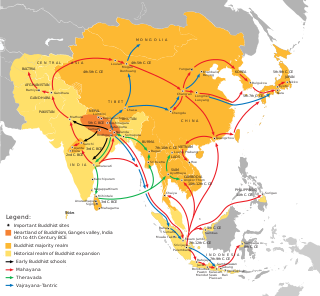
Buddhism entered Han China via the Silk Road, beginning in the 1st or 2nd century CE. The first documented translation efforts by Buddhist monks in China were in the 2nd century CE via the Kushan Empire into the Chinese territory bordering the Tarim Basin under Kanishka. These contacts transmitted strands of Sarvastivadan and Tamrashatiya Buddhism throughout the Eastern world.
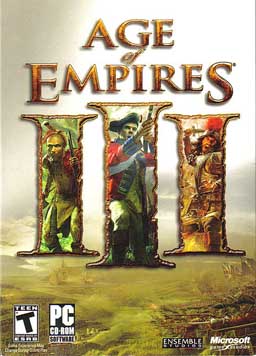
Age of Empires III is a real-time strategy video game developed by Microsoft Corporation's Ensemble Studios and published by Microsoft Game Studios. The Mac version was ported over and developed and published by Destineer's MacSoft. The PC version was released on October 18, 2005, in North America and November 4, 2005, in Europe, while the Mac version was released on November 21, 2006, in North America and September 29, 2006, in Europe. An N-Gage version of the game developed by Glu Mobile was released on April 28, 2009. It is the third game of the Age of Empires series and the sequel to Age of Empires II: The Age of Kings. A remaster titled Age of Empires III: Definitive Edition was released on October 15, 2020. Its successor, Age of Empires IV was released October 28, 2021, for Windows.

The Western Regions or Xiyu was a historical name specified in Ancient Chinese chronicles between the 3rd century BC to the 8th century AD that referred to the regions west of the Yumen Pass, most often the Tarim Basin in present-day southern Xinjiang and Central Asia, though it was sometimes used more generally to refer to other regions to the west of China as well, such as Parthia and Tianzhu.

Age of Mythology (AoM) is a real-time strategy video game developed by Ensemble Studios and published by Microsoft Game Studios. It was released on October 31, 2002 in North America and on November 14, 2002 in Europe.

Empire Earth II is a real-time strategy video game developed by Mad Doc Software and published by Vivendi Universal Games and their subsidiary Sierra Entertainment on April 26, 2005. It is a sequel to Empire Earth, which was developed by the now-defunct Stainless Steel Studios. The game features 15 epochs, 14 different civilizations and has three playable campaigns: a Korean, German, and American one, as well as several other playable scenarios. The game received a positive reaction, earning a 79% average rating on GameRankings.
Age of Empires is a series of historical real-time strategy video games, originally developed by Ensemble Studios and published by Xbox Game Studios. The first game was Age of Empires, released in 1997. Nine total games within the series have been released so far as of October 28, 2021.

Empire Earth: The Art of Conquest is the expansion pack for the real-time strategy game Empire Earth. Art of Conquest was published by Sierra Entertainment like with the original game, but was instead developed by Mad Doc Software. It was released on September 17, 2002, in the United States. The game was released in Europe later in the year, and the following year in Japan. The Gold Edition of Empire Earth, which features both the original and the expansion, was released on May 6, 2003.

Age of Empires III: The WarChiefs is the first expansion pack for the real-time strategy game Age of Empires III. It was released on October 17, 2006 in the United States. The expansion pack was bundled with the full game of Age of Empires III, called Age of Empires III Gold Edition on October 23, 2007. The Mac version was ported over, developed and published by Destineer's MacSoft. The full game for Mac was released on June 12, 2007 in the United States. It was followed by a second expansion pack to the original game called Age of Empires III: The Asian Dynasties.
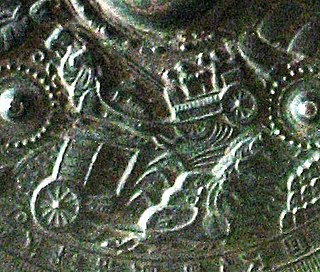
Horses in East Asian warfare are inextricably linked with the strategic and tactical evolution of armed conflict throughout the course of East Asian military history. A warrior on horseback or horse-drawn chariot changed the balance of power between the warring civilizations throughout the arc of East Asian military history.

Age of Empires (AoE) is a real-time strategy video game based on history, developed by Ensemble Studios and published by Microsoft, and the first game in the Age of Empires series. The game uses the Genie Engine, a 2D sprite-based game engine. The game allows the user to act as the leader of an ancient civilization by advancing it through four ages, gaining access to new and improved units with each advance.

Age of Empires IV is a real-time strategy video game developed by Relic Entertainment in partnership with World's Edge and published by Xbox Game Studios. It is the fourth installment of the Age of Empires series, and the first installment not developed by Ensemble Studios. The game was released on October 28, 2021 for Windows, and on August 22, 2023 for Xbox One and Xbox Series X/S.

